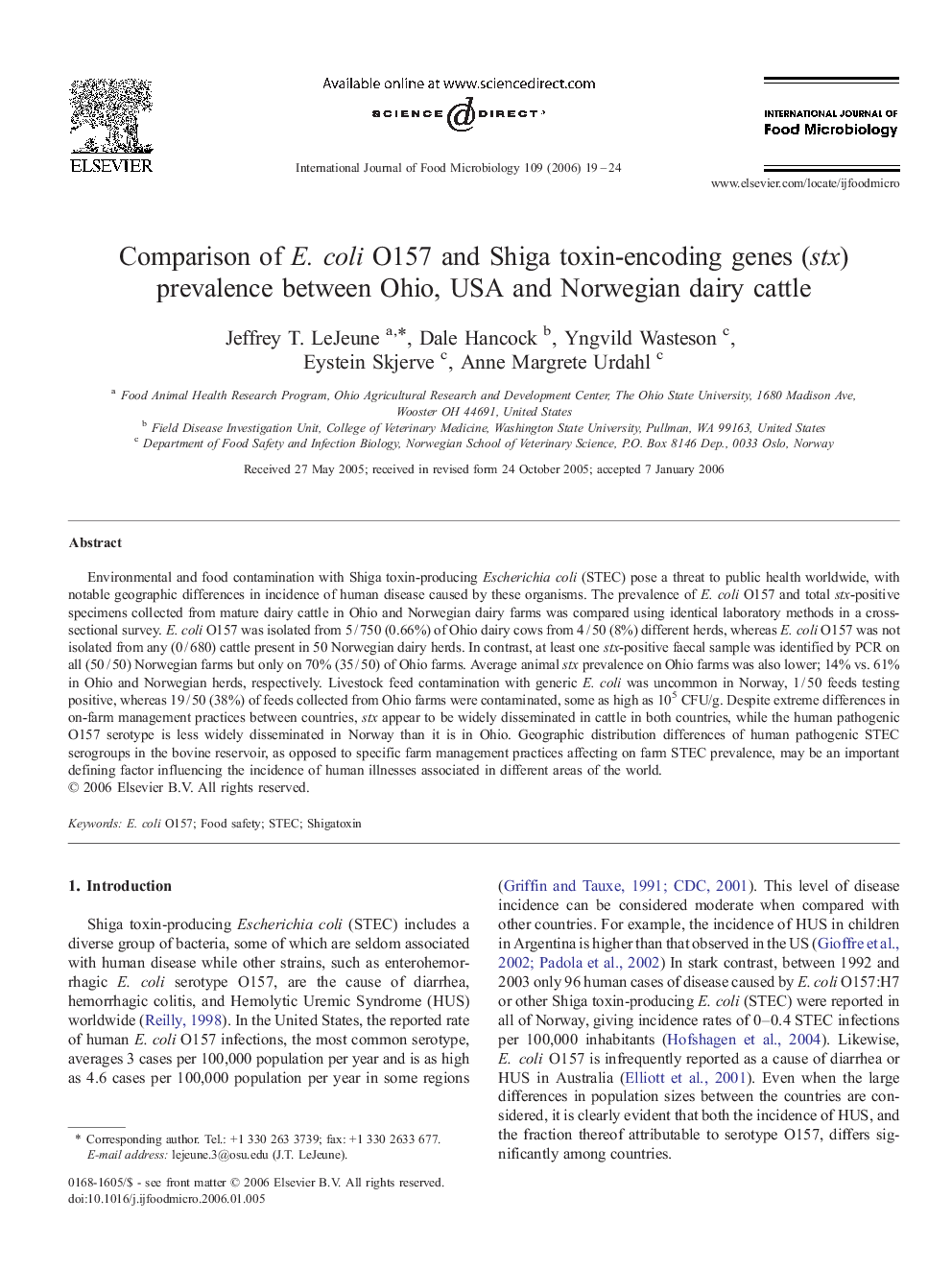| Article ID | Journal | Published Year | Pages | File Type |
|---|---|---|---|---|
| 4370167 | International Journal of Food Microbiology | 2006 | 6 Pages |
Environmental and food contamination with Shiga toxin-producing Escherichia coli (STEC) pose a threat to public health worldwide, with notable geographic differences in incidence of human disease caused by these organisms. The prevalence of E. coli O157 and total stx-positive specimens collected from mature dairy cattle in Ohio and Norwegian dairy farms was compared using identical laboratory methods in a cross-sectional survey. E. coli O157 was isolated from 5 / 750 (0.66%) of Ohio dairy cows from 4 / 50 (8%) different herds, whereas E. coli O157 was not isolated from any (0 / 680) cattle present in 50 Norwegian dairy herds. In contrast, at least one stx-positive faecal sample was identified by PCR on all (50 / 50) Norwegian farms but only on 70% (35 / 50) of Ohio farms. Average animal stx prevalence on Ohio farms was also lower; 14% vs. 61% in Ohio and Norwegian herds, respectively. Livestock feed contamination with generic E. coli was uncommon in Norway, 1 / 50 feeds testing positive, whereas 19 / 50 (38%) of feeds collected from Ohio farms were contaminated, some as high as 105 CFU/g. Despite extreme differences in on-farm management practices between countries, stx appear to be widely disseminated in cattle in both countries, while the human pathogenic O157 serotype is less widely disseminated in Norway than it is in Ohio. Geographic distribution differences of human pathogenic STEC serogroups in the bovine reservoir, as opposed to specific farm management practices affecting on farm STEC prevalence, may be an important defining factor influencing the incidence of human illnesses associated in different areas of the world.
